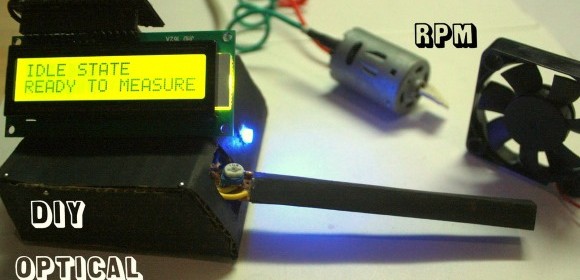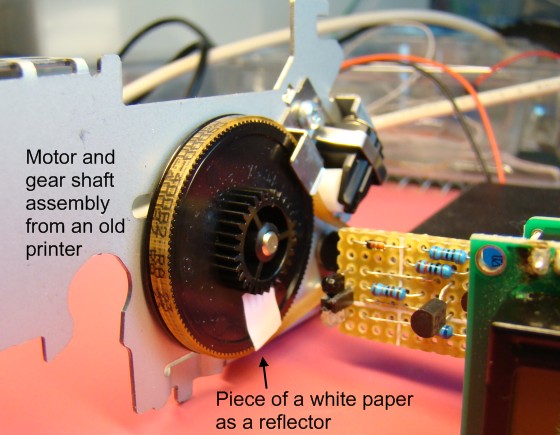DIY tachometer using optical sensing

This DIY tachometer uses optical sensing to compute the rotational speed of a rotating object and displays the speed on an LCD display. It is Arduino-based project and can measure RPM over 20K.
|
|
|

This DIY tachometer uses optical sensing to compute the rotational speed of a rotating object and displays the speed on an LCD display. It is Arduino-based project and can measure RPM over 20K.

Tachometer is a device that measures the rotational speed of any shaft or disc. The unit of the measurement is usually revolutions per minute or RPM. The traditional method of measuring RPM of a rotating shaft was based on velocity feedback concept where a dc generator is hooked to the rotating shaft so that the voltage induced across the generator’s terminals is proportional to the speed of the shaft. Today, we are going to make a digital tachometer based on a PIC microcontroller that requires no physical contact with the rotating shaft to measure its rotational speed. The physical contact is avoided by using an optical detection technique that requires an infrared light emitting diode in conjunction with a photo detecting diode. StartUSB for PIC from mikroElektronika is the main controller board used in this project. To read more about this board, visit my article Getting started with PIC18F Microcontrollers. This tachometer can measure speeds up to 99960 RPM with the resolution of 60 RPM. The result is shown on a 16×2 character LCD display.

A tachometer is use to measure the rotations per minute (RPM) of a moving shaft or a motor. An example is a digital tachometer in a car that gives the RPM of the engine. This tutorial shows how to build a digital tachometer using a microcontroller and optical sensors.
The sensor unit consists of an IR LED that transmits infrared light and a photo diode that receives the light. This project uses a computer fan to demonstrate the technique. The fan is placed between the IR LED and the photo diode so that the blades of the moving fan interrupts the light received by the photo diode. Each interruption of the light gives a pulse that is counted by a PIC18F452 microcontroller. With a little math, the number of rotations per minute can be calculated. The result is displayed on a LCD screen. Read more
|
|